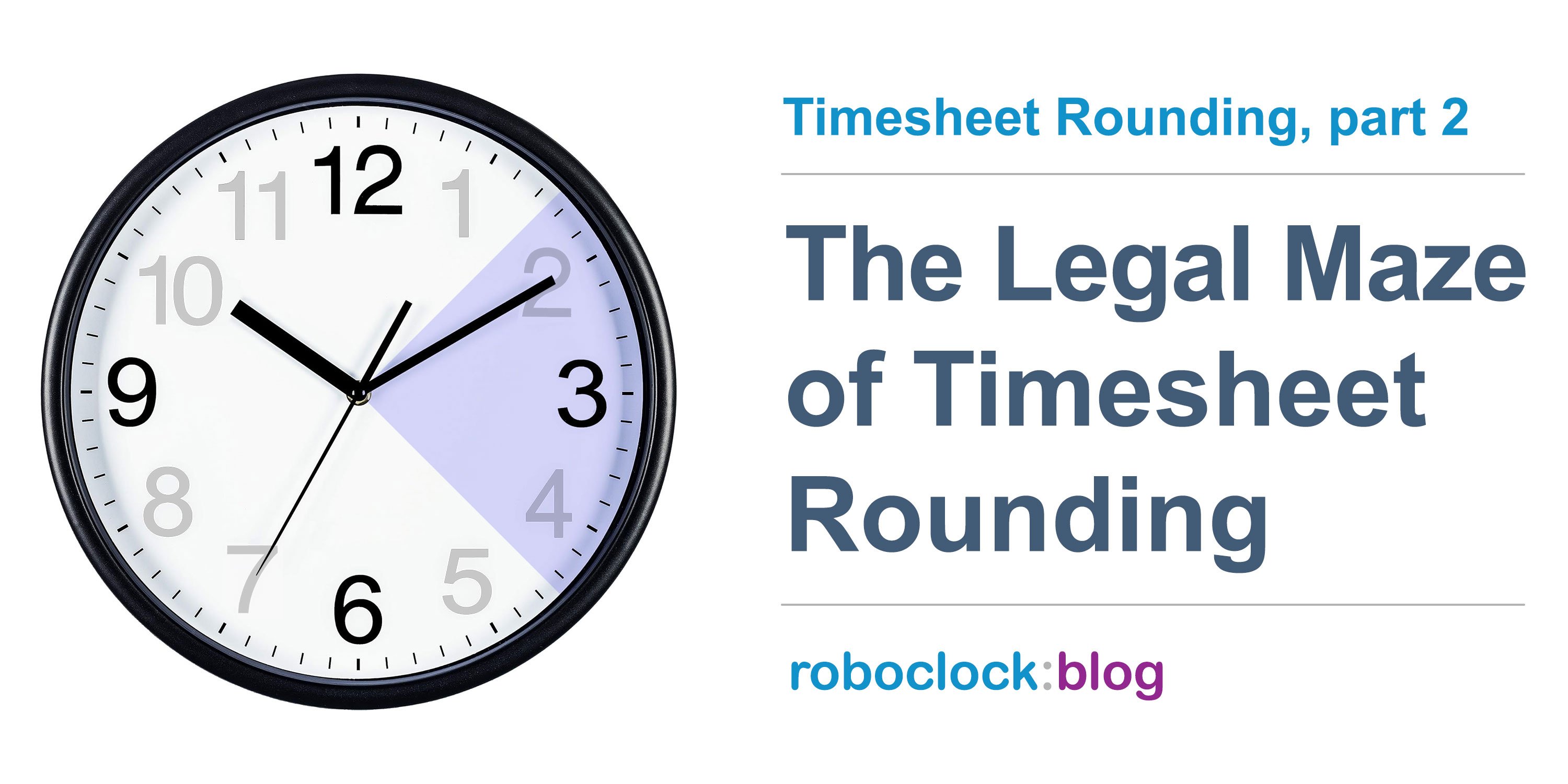The Legal Maze of Timesheet Rounding
Part 2 of 4 in a limited series of articles about Timesheet Rounding
Is Timesheet Rounding Legal?
When it comes to timesheet rounding, the big question is, "Is it legal?" The answer is yes, but there are specific guidelines that must be followed. The Department of Labor (DOL) lays down the law on this matter, ensuring fairness for both employers and employees. Let's break down these rules:
1. Neutrality or Employee Favorability
Timesheet rounding cannot consistently favor employers. It must either be entirely neutral or tilt in favor of the employees. In other words, employers can't always round down employee time. This ensures that employees are not consistently shortchanged.
2. Fifteen-Minute Maximum Increment
Employers can round to the nearest minute or to specific increments, but the maximum rounding increment allowed is fifteen minutes. This means that if you clock in at 8:07 AM, your time can be rounded down to 8:00 AM, but if you clock in at 8:08 AM, it rounds up to 8:15 AM.
3. The Seven-Minute Rule
This is where it gets a bit more intricate. If an employee clocks in at or before the seven-minute mark within a fifteen-minute window, their time rounds down. For example, if an employee clocks in at 8:07 AM, their time rounds down to 8:00 AM. However, if they clock in after the seven-minute mark, their time rounds up. If they clock in at 8:08 AM, it rounds up to 8:15 AM.
Different Ways to Round Legally
Now that we understand the rules, let's explore three legal ways to round employee timesheets:
1. Indiscriminate Rounding
Employers can round up or down without any bias, simply to the nearest increment. For instance, if an employee clocks in at 8:58 AM and clocks out at 4:56 PM, their timesheet would read 9:00 AM in and 5:00 PM out.
2. Favorable In, Favorable Out
In this approach, employers round clock-in times to favor employees and clock-out times to favor the employer. Using the same example, the employee's timesheet would show an 8:55 AM clock-in time and a 4:55 PM clock-out time.
3. Favorable for Both
In this scenario, both clock-in and clock-out times are rounded to favor the employee. So, the employee's time card would indicate an 8:55 AM clock-in and a 5:00 PM clock-out.
Why Do Employers Round Timesheets?
Now, let's touch on why employers opt for timesheet rounding. While some may do it to simplify payroll calculations, others have different motivations. Only about 14% of employers admit to rounding timesheets to save on labor costs. In contrast, nearly 18% claim they round timesheets to boost employee pay. The remaining 1 in 5 employers use timesheet rounding to prevent employees from clocking in before the start of their scheduled shift, a common issue among business owners.
Leading into the Consequences
However, timesheet rounding isn't without its challenges and consequences. In our next article, we'll dive deeper into the repercussions of improper timesheet rounding. To provide context, let's consider Maria's story, the employee who mysteriously had her clock-in time rounded to 9:00 AM when it should have been 9:02 AM. This seemingly small adjustment could lead to significant consequences, not only for Maria but also for her employer.
In our upcoming article, we'll explore how timesheet rounding, if not executed correctly, can leave employers vulnerable to certain pitfalls, including wage and hour grievances, inaccurate employee records, and the complex de minimis doctrine. Stay tuned for an in-depth look at these issues and how they vary by state.




